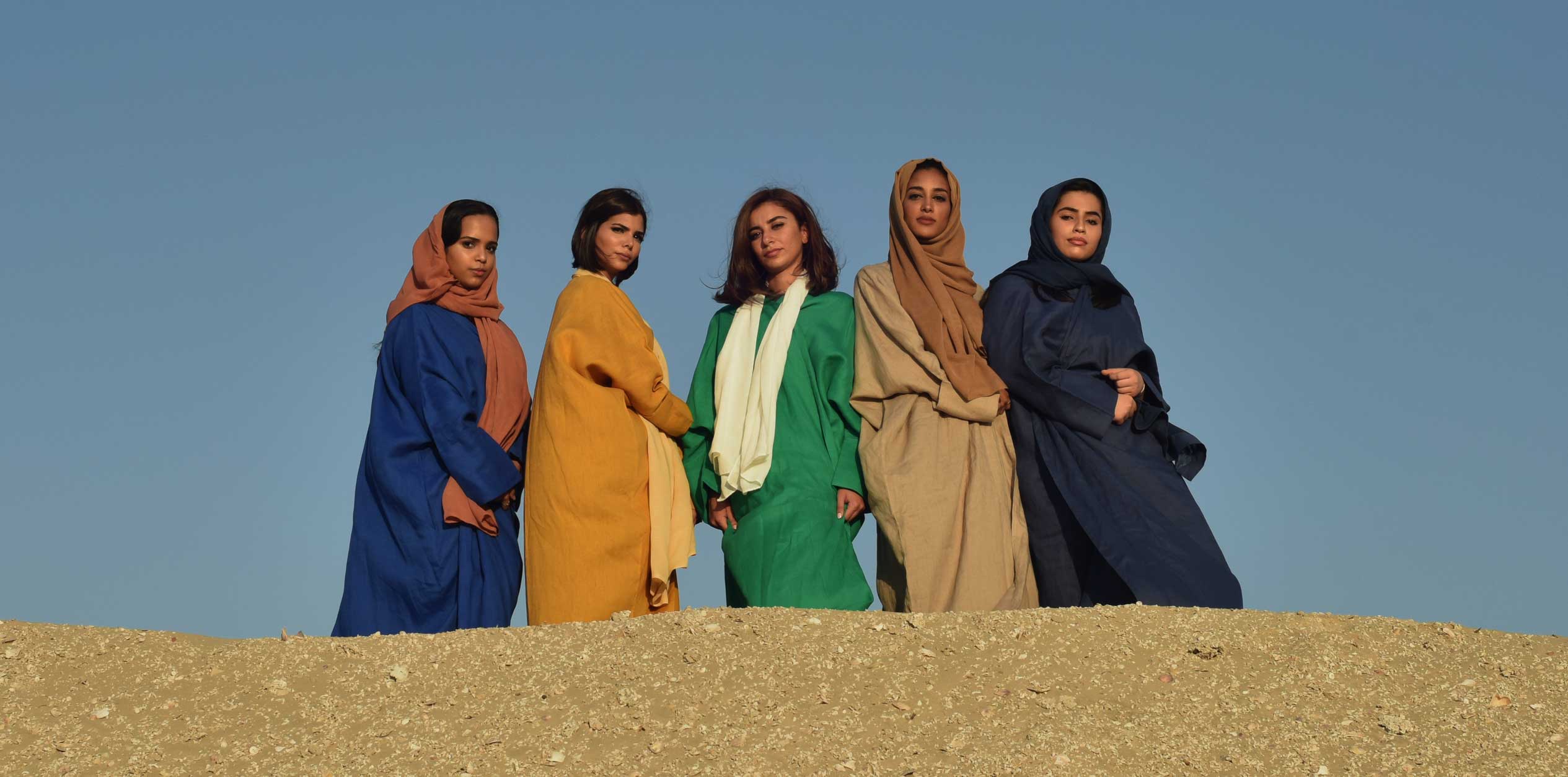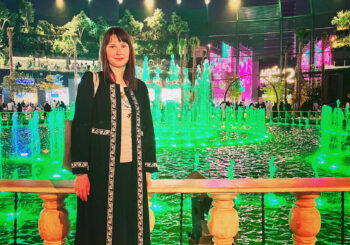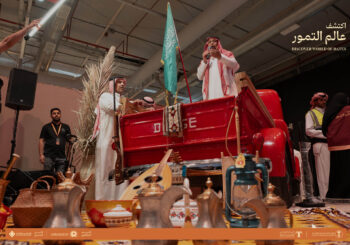In the bustling cafes of Riyadh and along the waterfront in Jeddah, the traditional black abaya, once worn almost uniformly by women across Saudi Arabia, now shares the street with garments in beige, navy, olive, and soft lilac. Some are embroidered at the sleeves or hem. Others are tailored into minimalist overcoats or worn open over jeans and sneakers. The change is subtle but unmistakable.
Long a symbol of modesty and conformity, the abaya is undergoing a quiet transformation. While it remains a staple of Saudi women’s wardrobes, it has also become a medium for personal expression, influenced by generational shifts, evolving interpretations of modesty, and a broader reimagining of public life.
The Abaya is Rooted in Modesty and Tradition
The abaya, a loose-fitting outer robe, has for decades functioned as a visual marker of Saudi Arabia’s religious and cultural values. It has been worn in different forms across the Arabian Peninsula for centuries, but within the Kingdom, the black abaya in particular became deeply embedded in daily life by the mid-20th century.
Its prominence was shaped not only by religious beliefs but also by social norms and, at times, enforcement by religious authorities. In public life, women were expected to wear the abaya, often accompanied by a headscarf or face covering, as a matter of propriety and collective identity. The garment was seen not only as a religious obligation by many but also as an integral part of Saudi cultural identity, uniting women across cities, regions, and tribes in a shared public aesthetic.
Although black remained the default, the fabric, texture, and drape of the abaya allowed for some personal variation. Still, colorful or embellished styles were generally confined to private settings or viewed with reservation. In many areas, deviation from the norm was enough to attract public scrutiny, and the abaya remained a uniform in both spirit and appearance.
A Shift in Public Space
The turning point came gradually. In 2018, authorities announced that women, including non-Saudi residents and tourists, were not required to wear the abaya or the hijab. Though the law had never strictly mandated it for Saudi citizens, the move signaled a relaxation of official expectations and a broader cultural shift underway in the Kingdom.
In the years since, it has become increasingly clear that the abaya has not simply disappeared. Instead, it has been embraced by many women as a practical and comfortable piece of clothing, one that lends itself to customization and personal flair. Lightweight fabrics, looser cuts, and creative tailoring have given women new ways to make the abaya their own. For some, it is no longer a requirement but a preference – a garment chosen for its ease and adaptability.
On social media platforms such as TikTok and Instagram, this shift is visible in real time. Foreign visitors and residents frequently share videos showcasing their abaya collections, praising the garment for its versatility and elegance. Some post tutorials on how to style it. Others reflect on the sense of dignity and ease they feel while wearing it. The abaya, in this way, has taken on a new role: not only as a local custom but as an object of admiration and curiosity beyond the Kingdom’s borders.
Across Saudi Arabia, women began experimenting more openly with colors, fabrics, and silhouettes. Earth tones, pastels, and even whites and greys became more common, especially among younger generations and in major cities like Jeddah, Riyadh, and Khobar. The visual shift on city streets reflected deeper changes in how Saudi women navigate public life and define their identities.
More than just a fashion trend, the evolving abaya has therefore become a symbol of autonomy. The garment is no longer simply something worn out of expectation; it has become a means of expressing personality, values, and lifestyle. In its new forms, it invites both familiarity and individuality.
Diverse Styles Across Regions and Generations
The way the abaya is worn today often depends on where, and by whom. In Riyadh, professional women are often seen wearing abayas in muted tones – sand, slate, stone – cut in clean lines with subtle detailing (and often deferring to black for work settings). In Jeddah, a coastal city long known for its more relaxed atmosphere, embroidered patterns, bold colors, and flowing silhouettes are more common than elsewhere.
In Dammam and Khobar, where business and travel intersect, practical fabrics and contemporary cuts are apparent. Meanwhile, in smaller towns and rural areas, the traditional black abaya remains a prevailing choice. For many, it continues to reflect values of modesty, decorum, and respectability, passed down through generations.
Age plays a significant role too. Older women, who grew up at a time when deviation from black was rare or frowned upon, often continue to prefer the classic style. For younger generations, the abaya offers a space for reinterpretation. Some layer it over Western clothing. Others opt for cropped or kimono-style versions, blurring the lines between modest wear and street fashion. The garment, once nearly identical on every woman, now offers endless variation.
What has emerged is a quiet but visible mosaic of styles, each telling a different story about the woman who wears it. The abaya continues to unite, but it also now distinguishes.
Designers Reframe the Narrative
This evolution has provided fertile ground for Saudi designers who are redefining what the abaya can be. Labels such as Orange Blossom, Nora Al Shaikh, Kaf by Kaf, Arwa Al Banawi and others are among those leading a growing movement to blend traditional aesthetics with contemporary sensibilities.
Some draw on regional heritage, incorporating Sadu weaving, Hijazi embroidery, or Najdi geometric patterns into their designs. Others experiment with structure and silhouette, designing abayas that can be worn across contexts – from formal receptions to afternoon errands. Materials range from lightweight crepe and chiffon to structured cotton and even denim.

The rise of local fashion brands has also created economic opportunities, especially for women. Many of these designers are themselves young Saudi women who use their work to explore questions of identity, creativity, and cultural memory. Through fashion, they engage in a subtle yet impactful form of storytelling.
On platforms like Instagram, these designers share their work with a growing audience, both at home and abroad. Social media has turned the abaya into a living archive of shifting norms, where each post is a small window into the Kingdom’s broader cultural transformation.
Between Continuity and Change
Despite its evolving form, the abaya remains a potent cultural symbol. It continues to offer a sense of comfort and continuity in a rapidly changing society. For many women, it is still worn with intention, whether as an expression of faith, elegance, or personal pride.
In its new forms, the abaya reflects a society in motion. The lines between tradition and modernity, public expectation and personal expression, are no longer as rigid as they once were. A garment that once represented uniformity now allows space for nuance, variation, and quiet assertion.
Saudi Arabia is changing. So is the abaya. Not by shedding its past, but by expanding what the past can mean – and who gets to define it.
Enjoyed the article? Read about the thobe’s history and origins here.








Comments (0)